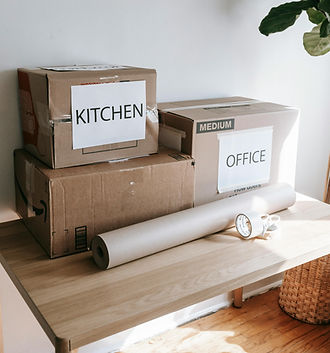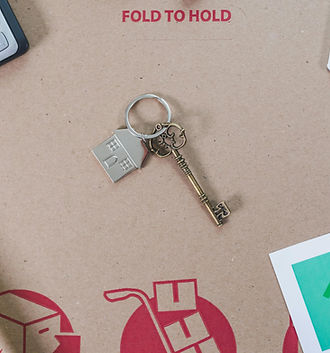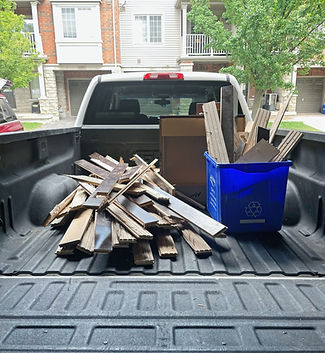

moving and relocating
Use cling wrap on drawers—don’t unpack them.
Instead of emptying out dressers or small organizers, wrap the drawers tight with plastic wrap so everything stays in place during the move. Instant time-saver.
Pack plates vertically like records.
They’re less likely to break that way—and you get extra packing points for being clever.
Color-code with tape or stickers.
Assign each room a color (blue for kitchen, red for bedroom, etc.) and match the tape on each box.
Even the kids can help with this one.
Label emotional items to review later.
If something’s too sentimental to toss but you don’t use it, put it in a “maybe later” box.
Decide with fresh eyes post-move.
Host a “Take My Stuff” Day with Friends or Neighbors
Before tossing it all, invite your circle to take a look—what’s junk to you might be gold to someone else.
Take before and after photos.
Trust us: it’s incredibly satisfying to see how far your space has come.
Great for motivation (and Instagram).

eco-friendly junk removal
Book junk removal before the move.
Clearing stuff out first makes packing easier, reduces what you move, and saves you money.
Trust us—you don’t want to move junk twice.
Turn it into a “keep, toss, donate” challenge.
Put on a timer, make it a game.
You’d be amazed how fast clutter disappears.
Upcycle where you can.
Old dressers can become planters or garage storage. Ask us what’s salvageable—we’ve seen some creative reuses.
Label emotional items to review later.
If something’s too sentimental to toss but you don’t use it, put it in a “maybe later” box. Decide with fresh eyes post-move.
Host a “Take My Stuff” Day with Friends or Neighbours
Before tossing it all, invite your circle to take a look—what’s junk to you might be gold to someone else.
Take before and after photos.
Trust us: it’s incredibly satisfying to see how far your space has come. Great for motivation (and Instagram).

estate clear out
Tackle Sentimental Items Last
Start with non-emotional areas like the garage or storage shed: leave photos and keepsakes until you’ve built momentum.
Create a ‘Maybe’ Box
If you’re unsure about certain items, set them aside in a ‘Maybe’ box. Revisit after the main clear out — you’ll have better perspective.
Photograph Each Room Before You Start
This helps you document what was there, and you can share it with family who couldn’t be there in person.
Label Items for Future Generations
If you find meaningful heirlooms,
label them with family stories to pass along instead of losing their history.
Be Prepared for Surprises
Old houses may hide forgotten items: safes in basements, documents tucked in attics. Be thorough but careful.
Celebrate Small Wins
Clear outs are emotional. Mark progress with breaks, small celebrations, or a family meal, it helps keep spirits up.

demolition
Know What You’re Tearing Down
Identify load-bearing walls, wiring, plumbing, or asbestos. Never swing a hammer without a clear plan — safety first!
Salvage What You Can
Before demo day, see if fixtures, appliances,
or wood can be donated, recycled, or reused. It keeps waste out of the landfill.
Prep Your Space
Remove furniture, cover floors, and seal off areas
that aren’t being demoed. Dust gets everywhere!
Communicate with Neighbours
Give a heads-up about noise, trucks, and
debris. A friendly note can go a long way
toward goodwill.
Get Proper Permits
Many people forget local demo permits, skipping them can delay renovations or lead to fines.
Don’t Demo Alone
Hire pros for big tear-downs. Light demo looks simple but hidden pipes or wires can cause costly surprises.
